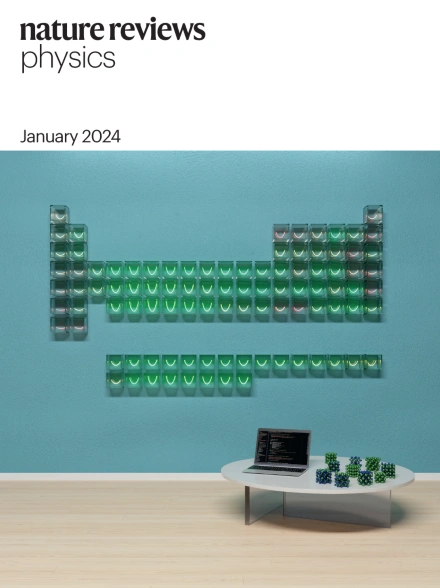Neutrinos from explosive transients at the dawn of multi-messenger astronomy
IF 39.5
1区 物理与天体物理
Q1 PHYSICS, APPLIED
引用次数: 0
Abstract
With the advent of time-domain astronomy and the game-changing next generation of telescopes, we have unprecedented opportunities to explore the most energetic events in our Universe through electromagnetic radiation, gravitational waves and neutrinos. These are elementary particles, which exist in three different flavours and change the latter as they propagate in the dense core of astrophysical sources as well as en route to Earth. To capitalize on existing and upcoming multi-messenger opportunities, it is crucial to understand: (1) the role of neutrinos in explosive transient sources as well as in the synthesis of the elements heavier than iron; (2) the impact of neutrino physics on the multi-messenger observables and (3) the information on the source physics carried by the detectable neutrino signal. In this Review, the status of this exciting and fast-moving field is outlined, focusing on astrophysical sources linked to collapsing massive stars and neutron-star mergers. In the light of the upcoming plethora of multi-messenger data, outstanding open issues concerning the optimization of multi-messenger detection strategies are discussed. Neutrinos have a crucial role in explosive transients, influencing the source dynamics and element synthesis. This Review summarizes our understanding of sources linked to collapsing massive stars and neutron-star mergers, emphasizing multi-messenger detection strategies.

在多信使天文学的黎明,来自爆炸瞬态的中微子
随着时域天文学和改变游戏规则的下一代望远镜的出现,我们有前所未有的机会通过电磁辐射,引力波和中微子探索宇宙中最具活力的事件。这些都是基本粒子,它们以三种不同的形式存在,当它们在天体物理源的密集核心以及前往地球的途中传播时,它们会改变后一种形式。为了利用现有的和即将到来的多信使机会,理解以下几点至关重要:(1)中微子在爆炸瞬态源中的作用以及在比铁重的元素合成中的作用;(2)中微子物理对多信使观测的影响;(3)可探测中微子信号携带的源物理信息。在这篇综述中,概述了这一令人兴奋和快速发展的领域的现状,重点是与大质量恒星坍缩和中子星合并有关的天体物理来源。针对即将到来的多信使数据的过剩,讨论了有关多信使检测策略优化的突出开放问题。中微子在爆炸瞬态中起着至关重要的作用,影响着源动力学和元素合成。这篇综述总结了我们对大质量恒星坍缩和中子星合并相关源的理解,强调了多信使探测策略。
本文章由计算机程序翻译,如有差异,请以英文原文为准。
求助全文
约1分钟内获得全文
求助全文
来源期刊

Nature Reviews Physics
Multiple-
CiteScore
47.80
自引率
0.50%
发文量
122
期刊介绍:
Nature Reviews Physics is an online-only reviews journal, part of the Nature Reviews portfolio of journals. It publishes high-quality technical reference, review, and commentary articles in all areas of fundamental and applied physics. The journal offers a range of content types, including Reviews, Perspectives, Roadmaps, Technical Reviews, Expert Recommendations, Comments, Editorials, Research Highlights, Features, and News & Views, which cover significant advances in the field and topical issues. Nature Reviews Physics is published monthly from January 2019 and does not have external, academic editors. Instead, all editorial decisions are made by a dedicated team of full-time professional editors.
 求助内容:
求助内容: 应助结果提醒方式:
应助结果提醒方式:


